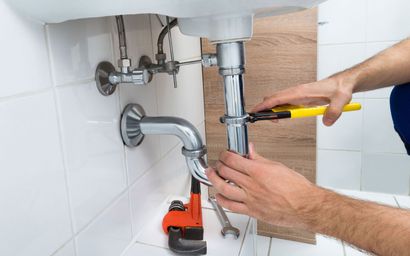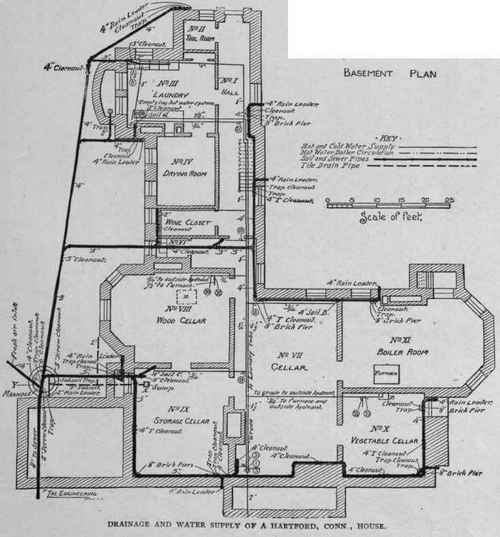A Closer Look at The Layout of Your House's Plumbing System
A Closer Look at The Layout of Your House's Plumbing System
Blog Article
Just how do you actually feel about Exploring Your Homes Plumbing Anatomy?

Comprehending how your home's plumbing system functions is crucial for every single home owner. From delivering tidy water for alcohol consumption, food preparation, and bathing to safely eliminating wastewater, a well-maintained pipes system is essential for your family members's health and wellness and comfort. In this extensive overview, we'll explore the complex network that makes up your home's pipes and offer pointers on maintenance, upgrades, and managing common problems.
Introduction
Your home's plumbing system is greater than just a network of pipes; it's an intricate system that ensures you have accessibility to tidy water and reliable wastewater elimination. Understanding its components and exactly how they interact can help you avoid expensive repair services and ensure whatever runs efficiently.
Standard Components of a Plumbing System
Pipes and Tubing
At the heart of your pipes system are the pipes and tubes that carry water throughout your home. These can be constructed from various materials such as copper, PVC, or PEX, each with its benefits in regards to sturdiness and cost-effectiveness.
Components: Sinks, Toilets, Showers, and so on.
Components like sinks, toilets, showers, and tubs are where water is utilized in your house. Recognizing just how these fixtures connect to the plumbing system assists in detecting troubles and intending upgrades.
Shutoffs and Shut-off Points
Valves control the flow of water in your plumbing system. Shut-off valves are important throughout emergency situations or when you require to make repair services, enabling you to isolate parts of the system without disrupting water circulation to the whole home.
Supply Of Water System
Main Water Line
The major water line links your home to the local supply of water or a private well. It's where water enters your home and is dispersed to various components.
Water Meter and Pressure Regulator
The water meter actions your water usage, while a pressure regulatory authority makes sure that water flows at a secure pressure throughout your home's plumbing system, protecting against damages to pipes and components.
Cold Water vs. Hot Water Lines
Understanding the difference between cold water lines, which provide water directly from the major, and warm water lines, which bring heated water from the hot water heater, helps in repairing and planning for upgrades.
Drainage System
Drain Pipes Pipeline and Traps
Drain pipelines bring wastewater away from sinks, showers, and bathrooms to the sewer or sewage-disposal tank. Traps stop sewer gases from entering your home and additionally trap particles that could cause clogs.
Air flow Pipes
Air flow pipelines permit air into the drainage system, avoiding suction that can slow drainage and trigger catches to vacant. Proper air flow is important for keeping the stability of your pipes system.
Importance of Appropriate Drain
Making certain appropriate drain stops back-ups and water damage. Consistently cleansing drains pipes and maintaining traps can avoid pricey fixings and prolong the life of your pipes system.
Water Heating Unit
Types of Water Heaters
Hot water heater can be tankless or typical tank-style. Tankless heaters warm water as needed, while containers store warmed water for prompt usage.
Upgrading Your Plumbing System
Reasons for Updating
Updating to water-efficient components or replacing old pipes can enhance water high quality, lower water costs, and increase the value of your home.
Modern Plumbing Technologies and Their Advantages
Discover technologies like smart leak detectors, water-saving bathrooms, and energy-efficient hot water heater that can conserve cash and lower ecological influence.
Cost Considerations and ROI
Calculate the upfront prices versus long-lasting financial savings when taking into consideration pipes upgrades. Several upgrades spend for themselves via reduced utility bills and fewer repairs.
How Water Heaters Connect to the Pipes System
Recognizing just how hot water heater attach to both the cold water supply and warm water circulation lines aids in detecting problems like inadequate hot water or leaks.
Maintenance Tips for Water Heaters
Regularly flushing your hot water heater to get rid of sediment, checking the temperature level settings, and examining for leaks can extend its life-span and boost power effectiveness.
Common Plumbing Concerns
Leakages and Their Causes
Leakages can take place due to maturing pipes, loose installations, or high water stress. Dealing with leaks promptly protects against water damages and mold growth.
Obstructions and Blockages
Obstructions in drains pipes and bathrooms are frequently brought on by flushing non-flushable items or a build-up of grease and hair. Using drainpipe screens and being mindful of what drops your drains pipes can prevent clogs.
Indications of Pipes Issues to Watch For
Low tide pressure, slow-moving drains, foul odors, or abnormally high water expenses are indications of potential plumbing troubles that ought to be attended to quickly.
Plumbing Maintenance Tips
Routine Inspections and Checks
Arrange yearly pipes evaluations to capture problems early. Try to find indicators of leaks, corrosion, or mineral build-up in taps and showerheads.
Do It Yourself Maintenance Tasks
Basic jobs like cleansing tap aerators, looking for toilet leaks utilizing color tablet computers, or shielding exposed pipes in chilly climates can prevent major plumbing problems.
When to Call a Specialist Plumber
Know when a pipes concern calls for professional knowledge. Attempting complicated repair services without correct expertise can cause even more damages and greater repair service prices.
Tips for Lowering Water Usage
Basic routines like taking care of leakages immediately, taking much shorter showers, and running full tons of laundry and dishes can save water and reduced your utility expenses.
Eco-Friendly Plumbing Options
Take into consideration lasting plumbing materials like bamboo for flooring, which is durable and environmentally friendly, or recycled glass for kitchen counters.
Emergency situation Readiness
Actions to Take During a Plumbing Emergency situation
Know where your shut-off shutoffs are located and exactly how to turn off the water supply in case of a burst pipeline or significant leakage.
Importance of Having Emergency Situation Get In Touches With Useful
Keep contact information for neighborhood plumbing technicians or emergency situation solutions readily available for fast feedback throughout a plumbing situation.
Ecological Impact and Conservation
Water-Saving Fixtures and Appliances
Installing low-flow faucets, showerheads, and toilets can significantly reduce water usage without giving up efficiency.
Do It Yourself Emergency Situation Fixes (When Relevant).
Momentary repairs like utilizing air duct tape to spot a leaking pipeline or positioning a container under a dripping tap can lessen damage up until a professional plumber shows up.
Conclusion.
Understanding the composition of your home's pipes system encourages you to preserve it effectively, conserving time and money on fixings. By following routine maintenance regimens and staying informed regarding contemporary pipes technologies, you can ensure your pipes system runs efficiently for several years ahead.
Understanding Your Home Plumbing System: A Comprehensive Guide
Plumbing System: The Lifeline of Your Home
At its core, the plumbing system is designed to perform two primary functions: bring fresh water into your home and remove wastewater. The system is a network of pipes, fixtures, and other components that transport water and sewage. Residential plumbing systems include potable water supply lines, drain-waste-vent (DWV) systems, and various plumbing fixtures that make water use in daily tasks possible.
Key Components:
Water Supply: This part of your plumbing system brings municipal water into your home, passing through the main water supply line. It s responsible for supplying all water needs, from drinking to bathing.
Drainage System: It carries waste and water away from your home to the sewer or septic system. This system includes all the piping within your home that leads to external sewage or septic systems.
Vent System: An essential yet often overlooked component, the vent system allows sewer gases to escape and lets air into the drainpipes, ensuring water and waste move correctly through the system.
Fixture: More Than Just Taps and Toilets
Plumbing fixtures are the most interactive parts of the plumbing system, including faucets, showers, toilets, and sinks. Each fixture is connected to the plumbing system and plays a role in either the delivery of freshwater or the disposal of waste and wastewater.
Types of Fixtures:
Faucets and Sinks: Used for washing hands, dishes, and other daily water needs. Toilets: Dispose of human waste through the sewage system. Bathtubs and Showers: Provide bathing facilities, requiring both hot and cold water supply. Water Supply: The Source of Life
The water supply system is a critical component, ensuring that potable water is available throughout your home for various uses, including drinking, cooking, and cleaning. This system consists of pipes that distribute water to different parts of the house, controlled by valves to regulate the water flow.
Types of Plumbing: Materials and Methods
Various types of plumbing systems and materials are used in residential settings, each with its advantages and applications. From copper and PVC pipes for water supply to cast iron and ABS for drainage, the choice of materials can impact the longevity and efficiency of your plumbing system.
https://intownplumbingtx.com/articles/home-plumbing-system-guide/

We had been shown that editorial on The Inner Workings of Your Home's Plumbing through a buddy on our other website. Enjoyed reading our content? Please quickly share it. Let someone else find it. I am grateful for being here. Kindly pay a visit to our blog back soon.
Visit Url Report this page